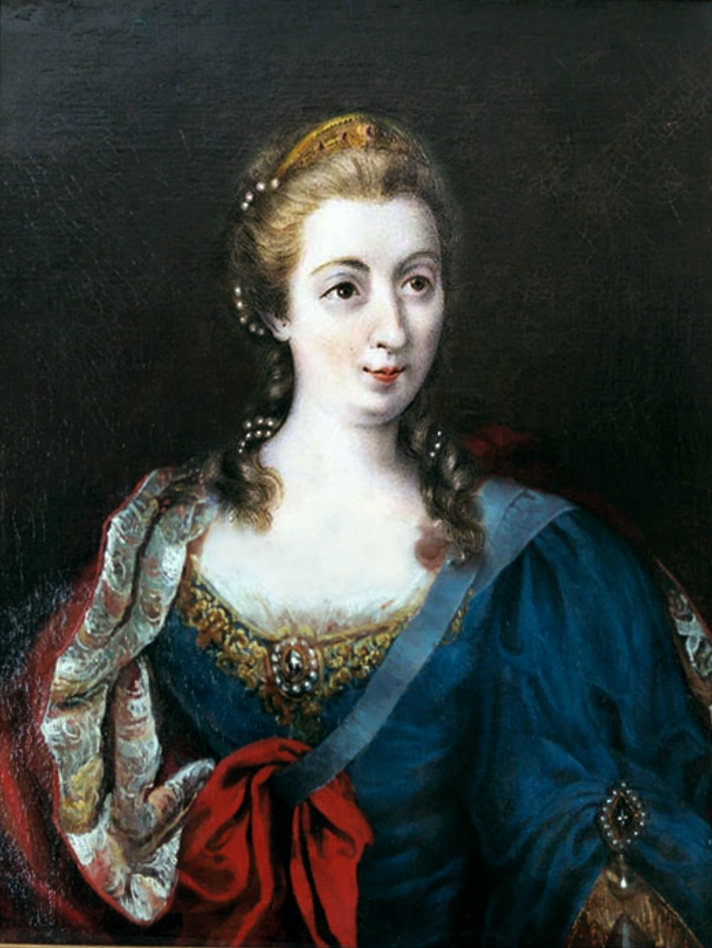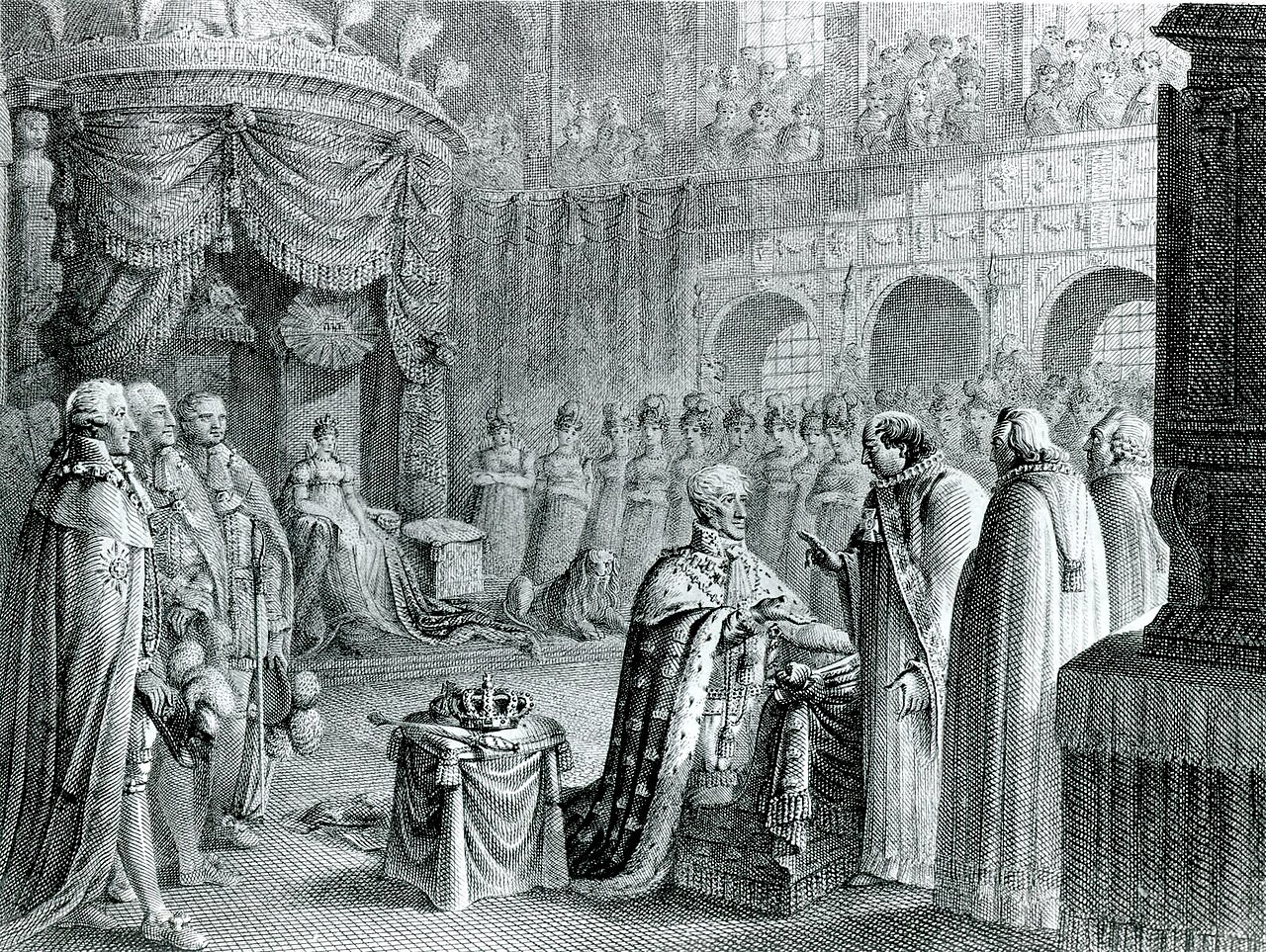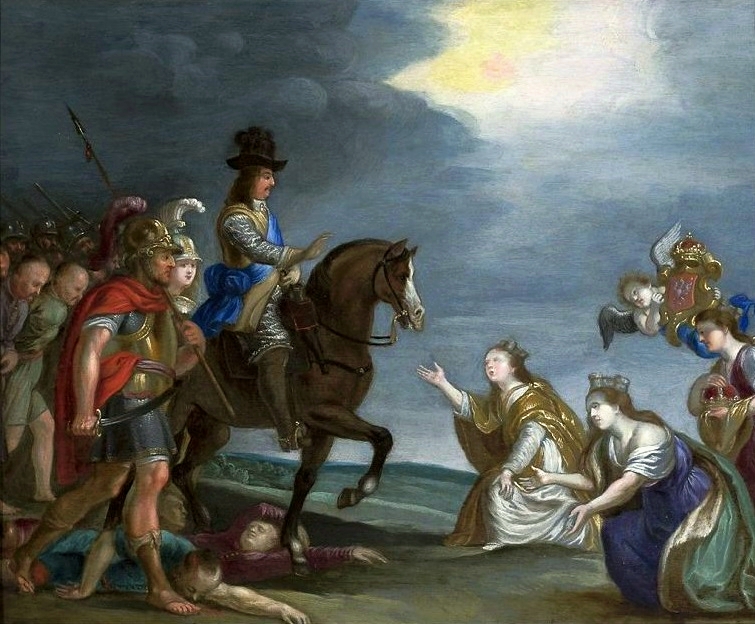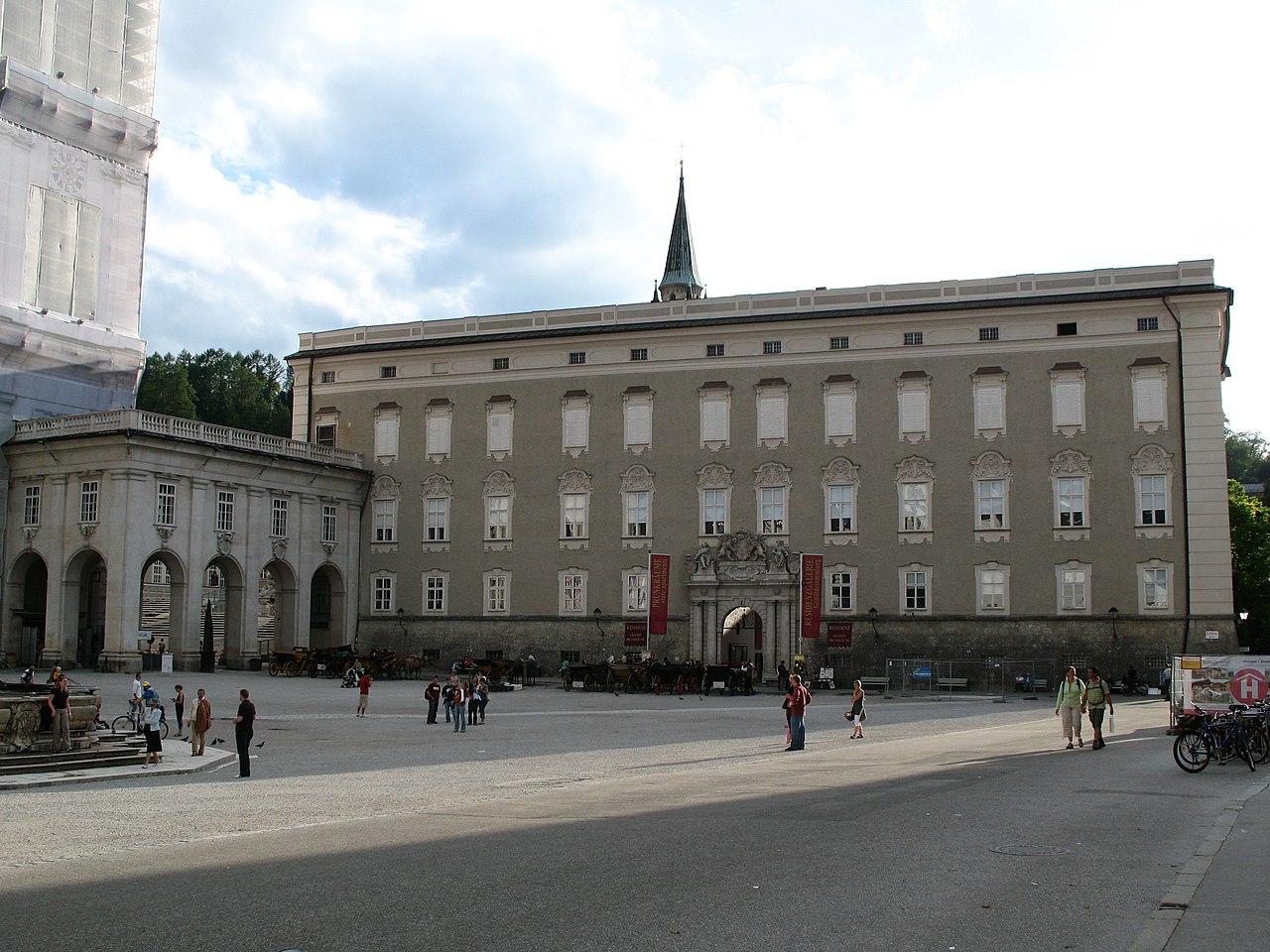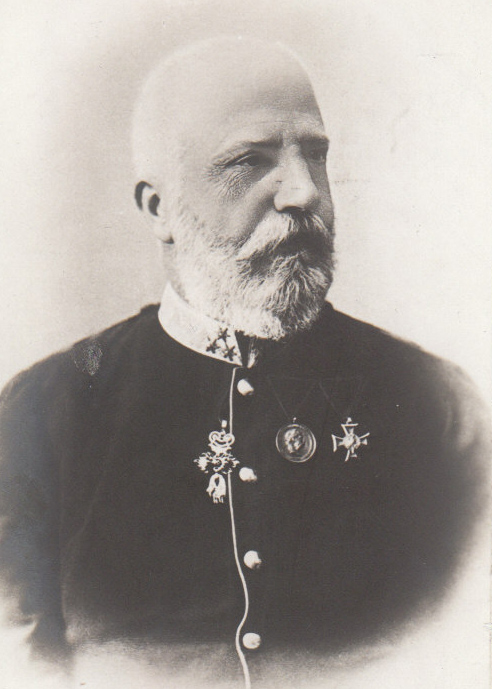by Susan Flantzer © Unofficial Royalty 2021
The Duchy of Modena and Reggio was a small northwestern Italian state that existed from 1452 to 1859, except during the Napoleonic Wars (1796 – 1814). The House of Este ruled the duchy from 1452 – 1796, and then the House of Austria-Este ruled from 1814 – 1859. In 1796, Modena was occupied by a French army under Napoleon Bonaparte, who deposed Ercole III d’Este, Duke of Modena and Reggio, and added the duchy to the French Empire. Ercole III died in exile in 1803.
Ercole III’s only surviving child of Maria Beatrice d’Este, the heiress of Modena and Reggio married Archduke Ferdinand Karl of Austria, son of Francis Stephen, Duke of Lorraine, Grand Duke of Tuscany, Holy Roman Emperor and Maria Theresa, in her own right Archduchess of Austria, and Queen of Hungary, Croatia, and Bohemia. The son of Maria Beatrice and Ferdinand Karl regained the Duchy of Modena and Reggio as Francesco IV in 1814, after the fall of Napoleon Bonaparte.
The Duchy of Modena and Reggio was abolished during the Italian unification movement. It was annexed to the Kingdom of Sardinia in 1860. In 1861, Vittorio Emanuele II, King of Sardinia was proclaimed the first King of the new, united Kingdom of Italy.
********************

Francesco IV, Duke of Modena and Reggio; Credit – Wikipedia
Francesco IV, Duke of Modena and Reggio was born an Archduke of Austria-Este on October 6, 1779, at the Royal Palace of Milan in Milan, Duchy of Milan, now in Italy. Francesco Giuseppe Carlo Ambrogio Stanislao was the fifth of the ten children and the second but the eldest surviving of five sons of Archduke Ferdinand Karl of Austria-Este and Maria Beatrice d’Este, Duchess of Massa and Carrara in her own right. At the time of Francesco’s birth, the Duchy of Milan was under Austrian Habsburg rule and his father was the Governor of Milan.
The marriage of Francesco’s parents, Ferdinand Karl and Maria Beatrice, created the House of Austria-Este, a cadet branch of the House of Habsburg-Lorraine. Francesco’s paternal grandparents were Francis Stephen, Duke of Lorraine, Grand Duke of Tuscany, Holy Roman Emperor and Maria Theresa, in her own right Archduchess of Austria, and Queen of Hungary, Croatia, and Bohemia. His maternal grandparents were Ercole III d’Este, Duke of Modena and Reggio and Maria Teresa Cybo-Malaspina, reigning Duchess of Massa and Carrara.

Francesco’s parents with his two eldest surviving sisters; Credit – Wikipedia
Francesco had nine siblings:
- Archduke Josef Franz of Austria-Este (born and died 1772), died in infancy
- Archduchess Maria Theresa of Austria-Este (1773 – 1832), married Vittorio Emanuele I, King of Sardinia, had seven children
- Archduchess Josepha of Austria-Este (1775 – 1777), died in childhood
- Archduchess Maria Leopoldina of Austria-Este (1776 – 1848), married (1) Karl Theodor, Elector of Bavaria, third wife, Karl Theodor was 52 years older than Maria Leopoldina, he died four years after the wedding, no children (2) Count Ludwig von Arco, had three children
- Archduke Ferdinand Karl Joseph of Austria-Este (1781 – 1850), Commander-in-Chief of the Austrian Army during the Napoleonic Wars, unmarried
- Archduke Maximilian Joseph of Austria-Este (1782 – 1863), Grand Master of the Teutonic Knights, Major General in the Austrian Army, unmarried
- Archduchess Maria Antonia of Austria-Este (1784 – 1786), died in childhood
- Archduchess Karl Ambrosius of Austria-Este (1785 – 1809), Archbishop of Esztergom, Primate of Hungary
- Archduchess Maria Ludovika of Austria-Este (1787 – 1816), married her first cousin Franz I, Emperor of Austria, third of four wives, no children, died from tuberculosis
In 1796, Modena was occupied by a French army under Napoleon Bonaparte. Francesco’s grandfather Ercole III d’Este, Duke of Modena and Reggio was deposed and exiled, and then the duchy was added to the French Empire. Ercole III died in exile in 1803. When Maria Beatrice’s mother died in 1790, she succeeded her as the reigning Duchess of Massa and Carrara. However, as the Duchy of Modena and Reggio did not allow female succession, Maria Beatrice’s rights to the throne of Modena and Reggio passed to her son Francesco when her father died. In 1814, after the defeat of Napoleon Bonaparte, Francesco was recognized as Francesco IV, Duke of Modena and Reggio by the Congress of Vienna. After the death of his mother in 1829, the Duchy of Massa and Carrara was annexed to the Duchy of Modena and Reggio.

Francesco’s wife Maria Beatrice of Savoy; Credit – Wikipedia
On June 20, 1812, at the Cathedral of the Assumption of the Mother of God and Saint Cecilia in Cagliari, Kingdom of Sardinia, now in Italy, 33-year-old Francesco married his 20-year-old niece Maria Beatrice of Savoy, the daughter of his sister Maria Theresa and Vittorio Emanuele I, King of Sardinia. Due to their close relationship, a special dispensation was received for their marriage from Pope Pius VII. Maria Beatrice was one of the four surviving children of Francesco’s sister Maria Theresa who married Vittorio Emanuele I, King of Sardinia. Francesco was convinced that if he married Maria Beatrice, and her father and his two surviving brothers had no sons, he could become King of Sardinia. Francesco’s sister (and his mother-in-law) Maria Theresa was accused of trying to convince her childless brother-in-law Carlo Felice, King of Sardinia to name her brother Francesco as the heir to the throne of Sardinia and was exiled from the Kingdom of Sardinia for a while. On his deathbed, Carlo Felice, King of Sardinia named Carlo Alberto, Prince of Carignano, the senior male member of the House of Savoy-Carignano, a cadet branch of the House of Savoy, as his heir.
Francesco and Maria Beatrice had four children:
- Archduchess Maria Theresa of Austria-Este (1817 – 1886), married Prince Henri, Count of Chambord, Legitimist pretender to the French throne, no children
- Francesco V, Duke of Modena (1819 – 1875), married Princess Adelgunde of Bavaria, had one daughter who died in infancy, Francesco became the Jacobite claimant to the thrones of England, Scotland and Ireland upon the death of his mother
- Archduke Ferdinand Karl Viktor of Austria-Este (1821 – 1849), married Archduchess Elisabeth Franziska of Austria, had one daughter Maria Theresia of Austria-Este who became the last Queen of Bavaria. Maria Theresia also became the Jacobite claimant to the thrones of England, Scotland, and Ireland upon the death of her uncle Francesco V of Modena.
- Archduchess Maria Beatrix of Austria-Este (1824 – 1906), married Infante Juan of Spain, Count of Montizón, Carlist pretender to the Spanish throne, had two sons
While Francesco IV’s grandfather Ercole III reigned the Duchy of Modena and Reggio as an enlightened monarch who continued the reforms started by his father, Francesco IV’s reign was more autocratic. He saw conspiracies everywhere and was known for his stern and tyrannical rule and his repression of democratic movements. Francesco abolished all reforms and introduced censorship and the secret police. Like his mother, he believed that the people were never satisfied and that it was better to keep them as poor as possible. Francesco was reinforced in his extreme conservatism and his opposition to political or social change by the Jesuits, a religious order of the Catholic Church. He gave the Jesuits a great deal of authority, especially in the field of education.

Funeral chapel of the House of Este and House of Austria-Este at the Church of San Vincenzo in Modena; Credit – Wikipedia
Francesco IV, Duke of Modena and Reggio died January 21, 1846, aged 66, at the Ducal Palace in Modena, Duchy of Modena, now in Italy. He was buried with his wife Maria Beatrice who had died in 1840, at the Church of San Vincenzo in Modena in the funeral chapel he had built in 1836 for members of his family.
This article is the intellectual property of Unofficial Royalty and is NOT TO BE COPIED, EDITED, OR POSTED IN ANY FORM ON ANOTHER WEBSITE under any circumstances. It is permissible to use a link that directs to Unofficial Royalty.
Works Cited
- En.wikipedia.org. 2021. Ferdinand Karl, Archduke of Austria-Este – Wikipedia. [online] Available at: <https://en.wikipedia.org/wiki/Ferdinand_Karl,_Archduke_of_Austria-Este> [Accessed 7 October 2021].
- En.wikipedia.org. 2021. Francis IV, Duke of Modena – Wikipedia. [online] Available at: <https://en.wikipedia.org/wiki/Francis_IV,_Duke_of_Modena> [Accessed 7 October 2021].
- En.wikipedia.org. 2021. Maria Beatrice d’Este, Duchess of Massa – Wikipedia. [online] Available at: <https://en.wikipedia.org/wiki/Maria_Beatrice_d%27Este,_Duchess_of_Massa> [Accessed 7 October 2021].
- En.wikipedia.org. 2021. Maria Beatrice of Savoy – Wikipedia. [online] Available at: <https://en.wikipedia.org/wiki/Maria_Beatrice_of_Savoy> [Accessed 7 October 2021].
- Flantzer, Susan, 2021. Maria Theresa of Austria-Este, Queen of Sardinia. [online] Unofficial Royalty. Available at: <https://www.unofficialroyalty.com/maria-theresa-of-austria-este-queen-of-sardinia/> [Accessed 7 October 2021].
- It.wikipedia.org. 2021. Francesco IV d’Austria-Este – Wikipedia. [online] Available at: <https://it.wikipedia.org/wiki/Francesco_IV_d%27Austria-Este> [Accessed 7 October 2021].
- Nl.wikipedia.org. 2021. Frans IV van Modena – Wikipedia. [online] Available at: <https://nl.wikipedia.org/wiki/Frans_IV_van_Modena> [Accessed 7 October 2021].

